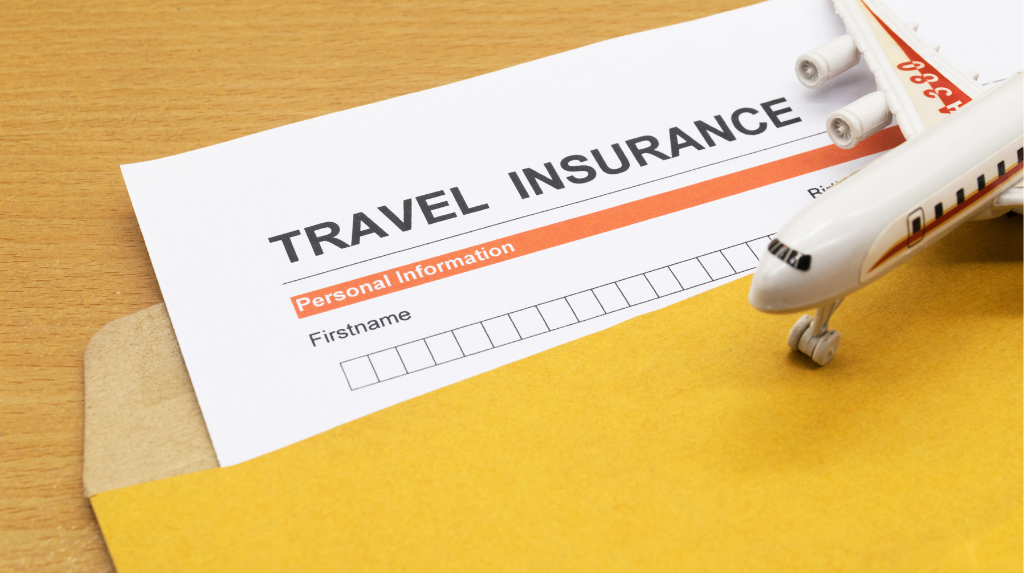If you are planning a trip to Italy, Whether for pleasure, work, or study, you should not forget to get covered by an insurance policy. This guide will explain travel insurance what kind of policy to choose and what it covers
Why You Need Travel Insurance
As thrilling as it might be, visiting Italy involves so much more than just preparing for the known. Accidents and the unexpected are everywhere, and that is not unusual in Italy as well. Suppose you’ve traveled to Rome to have a look at the historic streets, and unfortunately, you’ve had a road accident requiring urgent medical care. Without medical insurance, you may face increased bills due to your health issues.
Trip Disruptions and Cancellations
Travel insurance isn’t just about medical coverage. It also provides protection in case your trip doesn’t go as planned. For instance, if you’ve booked and pre-paid for a trip to Italy but must cancel or cut it short due to unforeseen events, travel insurance can reimburse you for the prepaid expenses, such as hotel stays and flight tickets. This can provide peace of mind and financial security during your travels.
Insurance Requirements and Travel Visa
Your insurance policy must meet the Schengen travel insurance requirements, covering a minimum of €30,000 in medical expenses. Ensure that your insurance remains valid throughout your stay
Long-Term Visa
For those applying for this visa, such as Work or Student visas, you may need international (expat) health insurance instead of standard travel insurance. Be sure to check the specific insurance requirements for your visa type.
Types of Coverage to Consider
When evaluating different travel insurance plans, consider including the following types of coverage:
- Trip Cancellation Insurance: Protects against financial losses from trip cancellations due to unforeseen circumstances like illness or natural disasters.
- Lost Baggage Coverage: Reimburses you for lost or delayed luggage.
- Trip Interruption Coverage: Covers costs incurred if your trip is interrupted due to emergencies.
Where to Get Travel Insurance for Italy
Directly from Insurance Companies
The most straightforward way is by purchasing it directly from reputable insurance companies. Many insurance providers operate online, allowing you to select a plan, make payments, and manage your policy from the comfort of your home.
Through Insurance Brokers
Alternatively, you can use online insurance brokers who offer plans from various insurance companies. This allows you to compare different plans and choose the one that best suits your needs.
Through Tour Agencies
If you’ve booked a tour to Italy, some tour companies may offer complimentary travel insurance plans. However, it’s crucial to carefully review the policy’s coverage to ensure it meets your requirements. In some cases, these plans may not provide adequate coverage, so it’s essential to be informed.
Submitting Proof of Italy Travel Visa Insurance
When you purchase a Schengen travel insurance plan from providers like Europ Assistance or vti. Travel, you’ll receive an Insurance Certificate or Letter. This document is crucial for your visa application and must be submitted to the Italian Embassy or Consulate along with other required documents.
What Does Italy Travel Insurance Cover?
Medical Emergencies
If you experience an accident or fall ill during your stay in Italy, travel health insurance will cover the cost of medical treatment. However, it’s important to note that it only covers emergencies and unforeseen situations, not pre-existing conditions.
Evacuation or Repatriation
In the event of a severe illness or injury that requires evacuation back to your home country or another location, evacuation coverage will cover the cost of an air ambulance. Repatriation coverage handles the transport of remains in the unfortunate event of a death.
Optional Coverage
Many insurance companies offer additional coverage options for an extra cost, including:
- Trip Disruption: This covers expenses related to flight delays, trip interruption, trip cancellation, and missed flights, provided the circumstances are beyond your control.
- Loss or Damage of Personal Belongings: If your baggage, passport, or other belongings are stolen or damaged during your trip, travel insurance can reimburse a portion of the cost.
- Liability Insurance: This type of insurance covers expenses arising from any damage you cause to others or their property while in Italy.
Choosing the Best Travel Insurance for Italy
When selecting a travel insurance plan for Italy, consider the following factors:
Policy Maximum
The policy maximum represents the maximum amount an insurance company will cover in medical expenses during your trip. To meet Schengen visa requirements, your insurance should have a policy maximum of at least €30,000, but higher coverage options are available.
Coverage Details
Carefully review the coverage details provided by insurance companies. Understand what each plan covers, including coverage amounts and specific conditions.
Exclusions
Equally important is understanding what the insurance company will not cover. Exclusions often include accidents related to alcohol or adventurous activities. Familiarize yourself with these exclusions to avoid any surprises.
Schengen Requirements
If you’re applying for an Italian visa, ensure that your travel insurance meets Schengen requirements. Failure to do so may result in your visa application being rejected.
Claim Process
Before purchasing a policy, inquire about the claim process. Understand how to make a claim, where to contact the insurance company, and what documents are required. This information is crucial in case you need to claim your trip.
24/7 Assistance
Check if the insurance company provides a 24/7 assistance phone line or support during your stay in Italy. Having access to assistance can be invaluable in emergencies.
Cost of Travel Insurance for Italy
Coverage Amount:
Policies with higher coverage amounts will cost more. A policy with coverage up to €30,000 will be less expensive than one with coverage up to €100,000.
Age: Older individuals, especially those over 60, may pay higher premiums due to increased risk.
Trip Duration:
Longer stays in Italy will result in higher insurance costs.
On average, for a seven-day trip, you can expect to pay approximately €20 to €30 for travel health insurance for one person.
Making a Travel Insurance Claim
When it comes to making a travel insurance claim, there are two primary methods:
Direct Billing
In some cases, hospitals in Italy may directly bill the travel insurance company for medical services, eliminating the need for you to pay upfront. However, not all hospitals offer this service, so it’s essential to check with your insurance provider about the network of hospitals that can bill directly.
Reimbursement
If you pay for medical treatment or other eligible expenses yourself, keep all receipts and necessary documents. You can then submit a claim to your insurance company, and they will reimburse you for the covered expenses. Ensure you understand the claims procedure and document requirements to expedite the process.
Travel Insurance for US, Canadian, and Australian Citizens
While it’s not strictly required for citizens of the US, Canada, or Australia to have travel health insurance when visiting Italy, it is highly recommended. Several travel insurance plans, such as Schengen Plus, Universal by Mutuaide, and Gold/Platinum by AXA, offer extended coverage, including Italy and other Schengen countries, as well as EU nations like Bulgaria, Romania, Cyprus, Ireland, and the UK.
Healthcare Costs in Italy for Tourists
Tourists without travel health insurance in Italy may be responsible for the full cost of medical treatment. While minor emergencies may not be prohibitively expensive, more extensive medical care, such as surgery, can result in substantial expenses.
It’s worth noting that there have been reports of tourists not being charged for emergency services. However, this is often due to the specific circumstances of the incident rather than a legal requirement. Italian citizens fund the healthcare system through taxes, and tourists are typically expected to pay for medical services.
Using the European Health Insurance Card
The EHIC is not a substitute for travel insurance. While EU nationals can use it to access medical care in Italy similarly to Italian citizens, it does not provide free healthcare. The same charges and co-pays apply unless you have specific travel health insurance. Also, It does not cover treatment at private healthcare institutions, nor does it include coverage for evacuation, trip disruptions, liability, and more.
Climate and Health Considerations
Italy boasts a Mediterranean climate, characterized by hot summers and cold winters. While extreme weather conditions are rare, it’s essential to take precautions, such as staying in the shade during hot days and dressing warmly in winter.
Car Insurance for Driving
If you plan to drive in Italy, standard travel insurance will not cover your vehicle. You’ll need a separate international car insurance plan that includes coverage for Italy and other Schengen countries you may be traveling through. It’s crucial to check whether your driving license and license plates are valid and accepted in Italy.
Key Requirements for Travel Insurance
When selecting travel insurance for Italy, ensure that it meets the following criteria:
- Minimum Coverage: The policy must provide at least €30,000 in medical coverage, as required by Schengen regulations.
- Medical Emergency Coverage: This includes hospitalization costs in case of accidents or sudden illnesses.
- Repatriation and Evacuation: Coverage should include provisions for emergency evacuation and repatriation of remains if necessary.
- Validity: The insurance must be valid for the entire duration of your stay in Italy and any other Schengen countries you plan to visit.
Tips for Traveling
Before you depart for Italy, here are some additional travel tips to keep in mind:
- Avoid Touristy Restaurants: Explore local eateries to experience authentic Italian cuisine and avoid overpriced tourist traps.
- Dining Times: Italians tend to have dinner late, with many restaurants opening after 7 in the evening.
- The “Coperto” Charge: When dining at Italian restaurants, expect a small “Coperto” charge per person, typically ranging from €1 to €5.
- Ticket Validation: If you use trains or buses for transportation, remember to validate your ticket at designated machines to avoid fines.
- Cash and Cards: While cards are widely accepted, carry some cash for smaller purchases, especially in less touristy areas.
- Adapter for Electronics: If you’re from the USA, ensure you have the right adapters and converters for your electronics to fit European sockets.
- Pre-Book Tickets: If you have planned activities, consider booking tickets in advance to avoid long lines at popular landmarks.
Traveling to Italy is a memorable experience filled with culture, history, and stunning landscapes. To ensure your trip is enjoyable and worry-free, investing in the right travel insurance is important. By following the guidelines and tips in this guide, you’ll be well-prepared for your adventure.
How Law and Visas Can Help?
At Law and Visas, our team of expert immigration consultants is here to make your travel insurance for Italy straightforward and successful. Whether you’re applying for a Schengen Visa (Short-Stay Visa) or a Long-Stay Visa (National Visa), we handle every step—from preparing your application to gathering the required documents.
Our immigration lawyer consultants and Lawyers ensure that your application meets the highest standards, with no details missed. We’ll also keep you informed throughout the process and coordinate with the immigration office or embassy on your behalf.
Law and Visas has a strong record of helping clients secure the travel insurance they need for their trips to Italy. Call us today at +234 812 5505 986 to learn how we can assist you.





